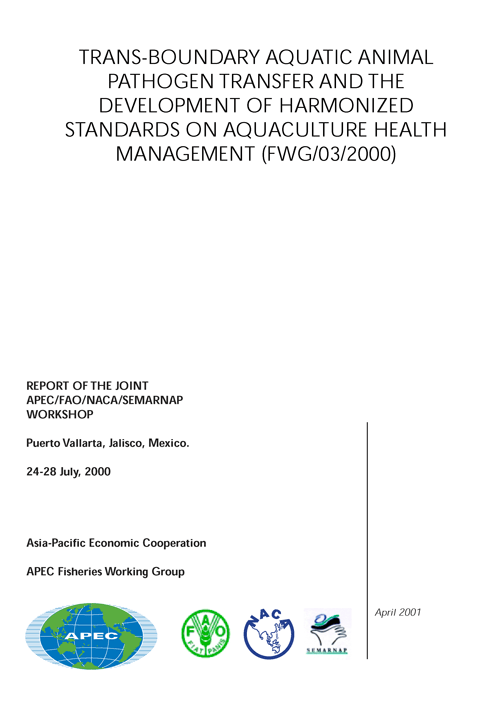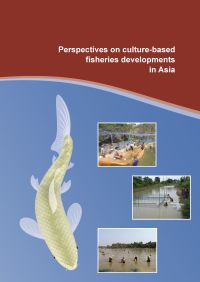Trans-boundary aquatic animal pathogen transfer and the development of harmonized standards on aquaculture health management
20 November 2003 | 2068 Downloads | .pdf | 1.9 MB | Governance and Policy, Health and Biosecurity
This document provides the report of the joint APEC/FAO/NACA/SEMARNAP expert workshop on “Trans-boundary aquatic animal pathogen transfer and the development of harmonized standards on aquaculture health management (FWG 03/2000),” held at Puerto Vallarta, Jalisco, Mexico on the 24-28 July 2000. The workshop, attended by 49 government representatives and experts from 17 APEC economies, FAO and NACA member countries, intended to: (a) review existing knowledge on impacts of trans-boundary aquatic animal pathogen movement and establishment; (b) review management strategies to control impacts of aquatic animal diseases, with an emphasis on measures taken at the state-level and among the private sector; (c) identify and evaluate current and potential future management interventions at the national, regional and international levels, with special reference to ongoing Asia-Pacific and international programs and potential cooperative mechanisms; (d) review the existing knowledge on the standardization, validation and harmonization of diagnostic techniques for fish and shellfish diseases; and (e) develop a program of follow-up actions for standardization of aquaculture health management measures. The impetus to the workshop was the growing concern over the impacts of trans-boundary spread of aquatic animal pathogens, including their impacts on aquaculture industries in the Americas and the Asia-Pacific Region.
During the five-day workshop, the participants shared knowledge on the impacts of, and management strategies for, aquatic animal diseases. Although, the emphasis of the discussions was on shrimp viral diseases and control of their negative impacts on shrimp aquaculture, the participants recognized the management measures discussed have broader application throughout Asia and the Americas in aquatic animal disease control. At the end of the workshop, the participants adopted a comprehensive “Puerto Vallarta Plan of Action” incorporating a wide range of recommendations for short, medium and longterm action to control the spread of serious aquatic animal pathogens. The Plan of Action strongly emphasizes the importance of effective cooperation between states, between states and private sectors, and within and between regions to harmonize aquatic animal health management measures and promote responsible trans-boundary movement of aquatic animals, ultimately contributing to improvements in the trade of aquatic animals and products and social and economic development through aquaculture. The recommendations emphasize an important role for APEC in capacity building and support to harmonization of aquatic animal health standards between member economies in the Asia-Pacific Region; the need for FAO, along with OIE, to promote broader international cooperation in aquatic animal health management; and a role for NACA in supporting further development of aquatic animal health capacity building within the Asia-Pacific Region.
The Plan of Action recognizes that serious aquatic animal diseases are not constrained by national boundaries, and that a mechanism for regional cooperation in the Americas is urgently needed to prevent the rapid spread of diseases. Such regional cooperation should address issues of technical development and harmonized approaches to aquatic animal health, as well as strategies for establishing regional mechanisms for presenting a coordinated view to relevant international and regional bodies such as OIE and FAO. The goal of this cooperation is to facilitate international trade in aquatic animals and further the sustainable development of aquaculture.
Copyright, all rights reserved.

